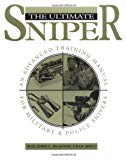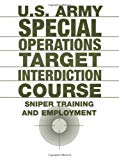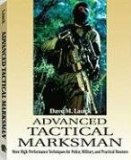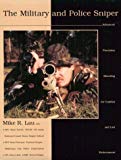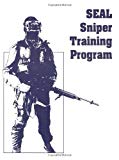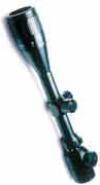 Snipers are a special breed of soldier. The sniper operates with a spotter, or alone, in close proximity to enemy positions.
Snipers are a special breed of soldier. The sniper operates with a spotter, or alone, in close proximity to enemy positions.
The sniper team risks significant danger to achieve enemy kills, and does so with extremely minimal support from friendly personnel.
Snipers are able to target specific critical enemy personnel and kill them with limited risk to civilian life.
A strategic bombing campaign takes life indiscriminately; the sniper is the most discriminate weapon in any nations inventory.
Most snipers use rifles chambered for the .308 (7.62mm) caliber, but other calibers are also utilized, such as .50, .338 Lapua, and .408 Cheyenne Tactical.
MCRP 3-01A
Marine Corps Reference Publication 3-01A: Rifle Marksmanship
FM 23-10
US Army Field Manual 23-10: Sniper Training
Sniper Country
Information on sniping
Snipers Paradise
The Sniper has special abilities, training, and equipment. His job is to deliver discriminatory, highly accurate rifle fire against enemy targets which cannot be engaged successfully by the regular rifleman because of range, size, location, fleeting nature, or visibility. Sniping requires the development of basic infantry skills to a high degree of perfection. A Sniper’s training incorporates a wide variety of subjects designed to increase his value as a force multiplier and to ensure his survival on the Battlefield. The art of Sniping requires learning and repetitiously practicing these skills until mastered. A Sniper must be highly trained in long range rifle marksmanship and field craft skills to ensure maximum effective engagements with minimum risk.
Mel’s Sniper Page
Useful information to both military snipers and Law Enforcement Sharpshooters
U.S. Marine Corps Scout/Sniper Association
The Marine Corps Scout/Sniper Association, is a non-profit, fraternal organization of Marine Corps Regular, Reserve, Retired, and former Marine Scout/Snipers.
UltimateSniper.com
Your Long-Range Shooting Resource on the Internet
HvPrsk
Swedish sniper site
American Sniper Association
Enhancing the image, abilities, proficiency and safety of the professional tactical sniper through education, support and information sharing
Sniper
Wikipedia encyclopedia entry on snipers
Sniper’s Hide
For serious tactical marksmen
Soldier Talk: Sniper
Sniper history from Colonel Low Wye Mun of the Army of Singapore
Police Sniper Training
This article summarizes the critical training techniques that can contribute to perfect performance during an actual police sniper engagement. These special shooting exercises can improve the likelihood of perfect one-shot performance, even under physical and psychological stress.
Snipercraft
Snipercraft is a nonprofit organization comprised up of active police snipers and tactical personnel. Our desire is for snipers to be recognized and respected as the trained professionals they really are. Our goal is to enhance the level of proficiency and professionalism of the police sniper.
National Tactical Officers Association
The NTOA is a national nonprofit professional police association established by and for the law enforcement professional responsible for the response and resolution of critical incidents.
The Israeli Special Forces Sniping Guide: Snipers School
The Israeli Defense Force (IDF) Snipers School is located in the Mitkan Adam army base, the IDF Special Training Center (MAHAM 7208). Together with the IDF Sharpshooting School, the two schools form the IDF Sniping And Sharpshooting Branch (“Anaf Klia Vet’zalafim - KALAT’Z”, in Hebrew).
Fixed and wearable acoustic counter-sniper systems for law enforcement
BBN has developed flexible counter-sniper technology capable of shooter and bullet trajectory localization using fixed, vehicle mounted, and/or body-worn microphone sensors. The proof-of-principle (POP) systems developed are accurate, low-cost, lightweight, and easy to install and use. The use of both supersonic bullet shock waves, and/or the muzzle blast, allows detection and localization of shooters with intentional or accidental muzzle blast suppression, or with subsonic rounds. This makes the system capable of finding shooters firing from within buildings or vehicles. It also requires fewer sensor installations per unit area and increases system robustness to the noise and reverberation present in urban settings. In this paper we first summarize the current POP system hardware and software configurations and show the results of government testing in urban and rural environments for military applications. Following this, cost and performance issues for urban law enforcement applications are presented, and performance predictions for various system configurations in an urban street monitoring scenario are given.

